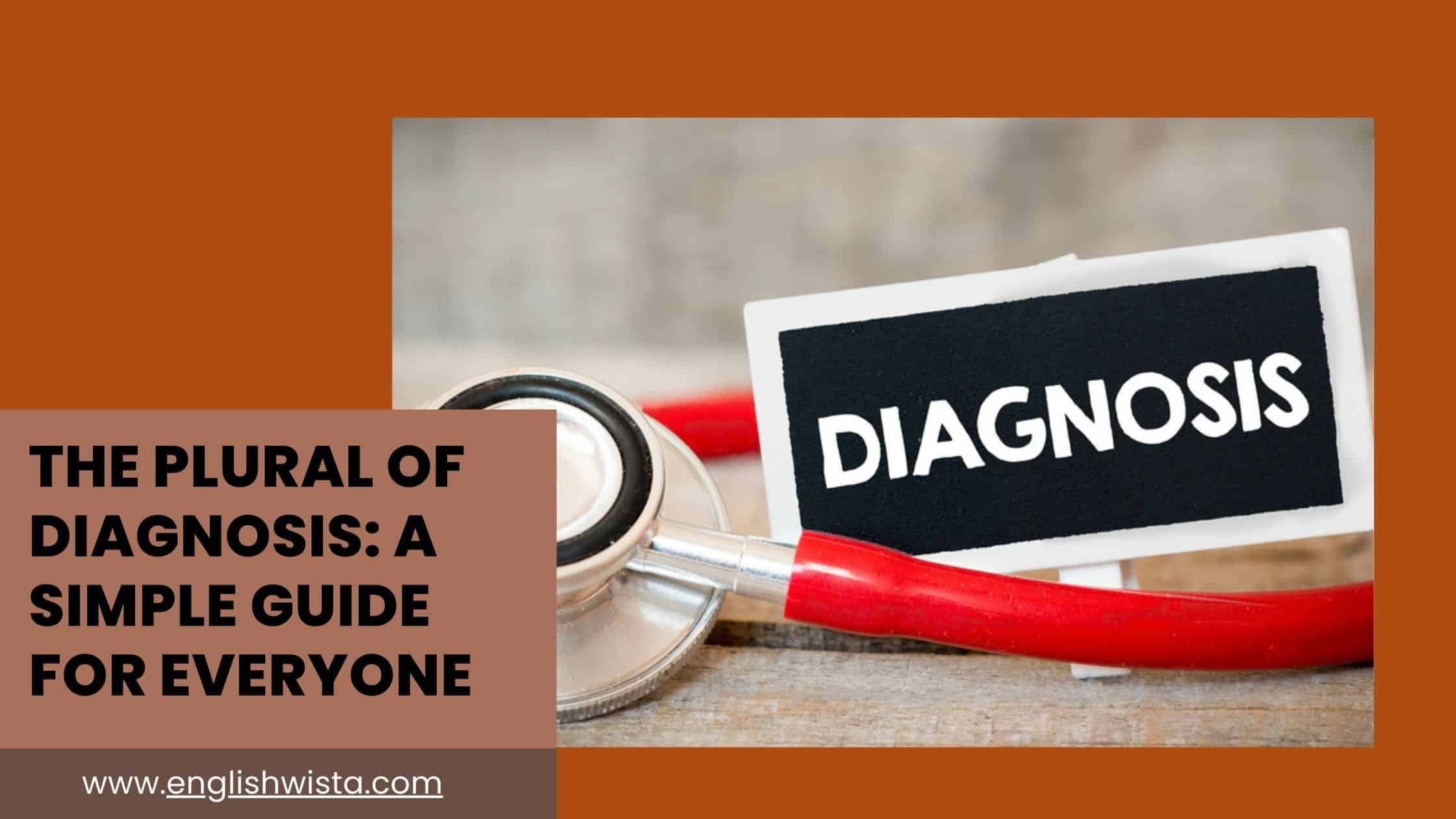Have you ever been reading a medical report or listening to a doctor and wondered, “What’s the plural of diagnosis?” You’re not alone! English can be tricky, especially when it comes to words borrowed from other languages. “Diagnosis” is one of those words that doesn’t follow the simple “add an -s” rule we usually use to make plurals.
But don’t worry I’ve got you covered. In this article, we’re going to explore the plural of diagnosis step by step. We’ll look at the meaning of the word, why the plural form is a little unusual, how to use it in real-life sentences, and even dive into some fun language facts.
By the end, you’ll not only know the correct plural form, but you’ll also feel confident using it in everyday writing and conversation. So, let’s get started!
What Does “Diagnosis” Mean?
Before we talk about plurals, let’s make sure we’re clear on the word itself.
A diagnosis is:
- the process of identifying a disease, condition, or problem by examining symptoms and running tests.
- the conclusion or result that comes from that process.
For example:
- The doctor gave her a diagnosis of pneumonia.
- After several tests, his diagnosis was finally confirmed.
So in simple terms, a diagnosis is like a label or answer that explains what’s wrong, especially in medical situations.
What Is the Plural of Diagnosis?
Here’s the big question: What is the plural of diagnosis?
The correct plural is diagnoses (pronounced: dye-AG-no-seez).
Notice the change:
- Singular: diagnosis (dye-AG-no-sis)
- Plural: diagnoses (dye-AG-no-seez)
It’s not diagnosises or diagnosiseses (which might sound funny but are incorrect). Instead, the ending changes because the word comes from Greek, and English keeps part of that original spelling rule.
Why Is It “Diagnoses” and Not “Diagnosis-es”?
This is where English shows off its love for borrowing.
The word diagnosis comes from the Greek word diagignōskein, which means “to distinguish” or “to know apart.” In Greek and Latin, many words ending in -is change to -es in the plural.
Here are a few similar examples:
- Crisis → Crises
- Analysis → Analyses
- Thesis → Theses
- Diagnosis → Diagnoses
So, when you see a word that ends with -is, there’s a good chance its plural will end with -es (and usually sound like -eez).
Is “Diagnosis” Singular or Plural?
To make it crystal clear:
- Diagnosis = singular (only one).
- Diagnoses = plural (more than one).
Examples:
- The diagnosis was clear after the blood test. (singular)
- The patient received two different diagnoses from two doctors. (plural)
If you mix them up, the sentence won’t sound right. Remember: one problem = one diagnosis; many problems = multiple diagnoses.
Real-Life Examples of “Diagnoses” in Use
Sometimes the best way to remember a word is to see it in action. Let’s look at some examples:
- Medical Setting:
- The hospital reported several new diagnoses of flu this week.
- Accurate diagnoses are essential for effective treatment.
- Everyday Conversation:
- She got a diagnosis of diabetes last year.
- Different doctors gave him different diagnoses, which was confusing.
- Research and Studies:
- The study compared diagnoses across multiple age groups.
- Early diagnoses can save lives.
See how natural it sounds once you get used to it?
Common Mistakes People Make
Let’s clear up some frequent mix-ups:
- Adding -s directly
- ❌ Wrong: diagnosises
- ✅ Correct: diagnoses
- Using diagnosis for plural
- ❌ Wrong: The doctor gave several diagnosis.
- ✅ Correct: The doctor gave several diagnoses.
- Mixing with analysis
- Because “analysis” also changes to “analyses,” people sometimes confuse them. Just remember: both follow the same rule.
Quick Trick to Remember
Here’s a little memory hack:
- If it ends in -sis (like diagnosis, analysis, or thesis), then the plural will usually end in -ses (diagnoses, analyses, theses).
- Think of it as: “sis becomes sees.”
So next time you’re unsure, just say to yourself: “One sis, many sees!”
Other Words Like Diagnosis
To make the pattern clearer, here are some more words that behave the same way:
- Hypothesis → Hypotheses
- Oasis → Oases
- Paralysis → Paralyses
Notice the rhythm? It’s a group of special words that follow the same rule.
Fun Facts About the Word Diagnosis
Here are a few interesting tidbits you might enjoy:
- The root word “gnosis” actually means knowledge in Greek. That’s why you see it in words like “prognosis” (knowing ahead of time) and “agnostic” (not knowing).
- “Diagnosis” wasn’t always used only in medicine. Originally, it also meant recognizing or distinguishing anything, not just diseases.
- Doctors sometimes joke that “a diagnosis is only the beginning,” because finding the label is just step one before actual treatment.
Practice Sentences You Can Try
Let’s do a little practice. Read these sentences and try to decide if they should use diagnosis or diagnoses.
- The doctor gave her a ___ of asthma.
- Over the years, he received many different ___ from specialists.
- Early ___ can prevent serious problems later.
- Only one clear ___ was made after all the tests.
Answers:
- diagnosis
- diagnoses
- diagnoses
- diagnosis
Did you get them right? Great! That means you’re already remembering the rule.
When to Use “Diagnosis” vs. “Diagnoses” in Writing
Here’s a quick guide you can save in your mind:
- Writing about one case → diagnosis
- Writing about multiple cases → diagnoses
So:
- Her diagnosis is pneumonia. (one case)
- The clinic reported several diagnoses of pneumonia this month. (multiple cases)
Recap of Key Takeaways
Let’s summarize everything we’ve learned so it sticks:
- Diagnosis means identifying or labeling a disease or condition.
- The plural of diagnosis is diagnoses (dye-AG-no-seez).
- It follows a Greek/Latin rule where -is → -es.
- Common mistake: saying diagnosises instead of diagnoses.
- Memory trick: “One sis, many sees.”
Conclusion
So, there you have it the mystery of the plural of diagnosis solved! It may look a little strange at first, but once you know the pattern, it’s actually pretty simple.
Just remember: one diagnosis, two or more diagnoses. That’s it! With this little rule in mind, you’ll never have to second-guess yourself again when writing or speaking.
Language quirks like this can feel confusing at first, but they’re also what make English rich and interesting. Now, the next time you read a medical article, talk to a doctor, or even watch a TV show about hospitals, you’ll know exactly why they say “diagnoses” instead of “diagnosises.”
And if anyone ever asks you, you’ll be ready to explain it like a pro.



